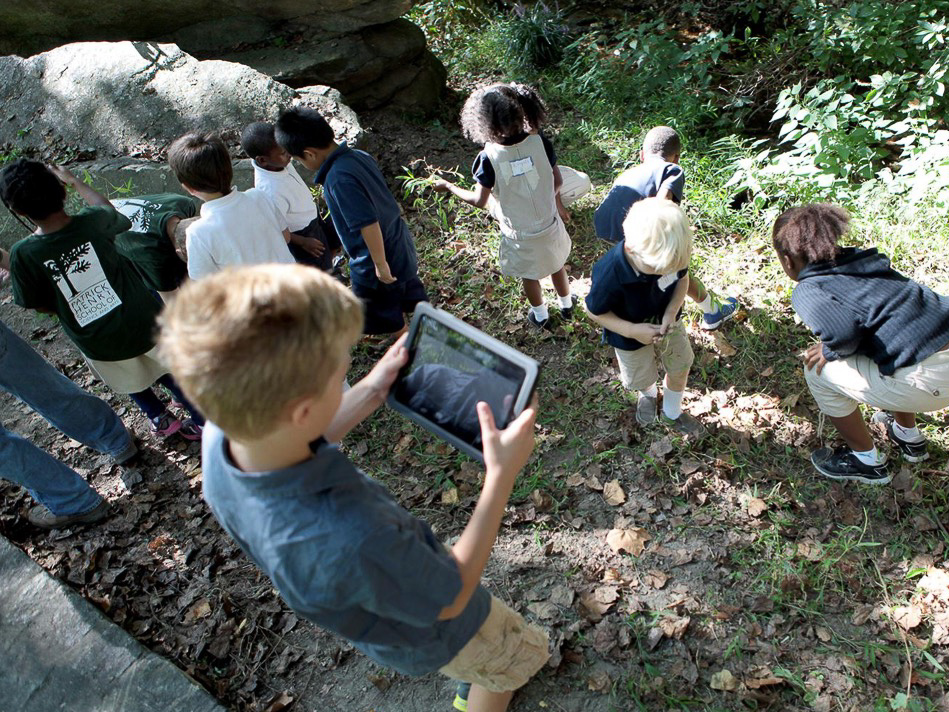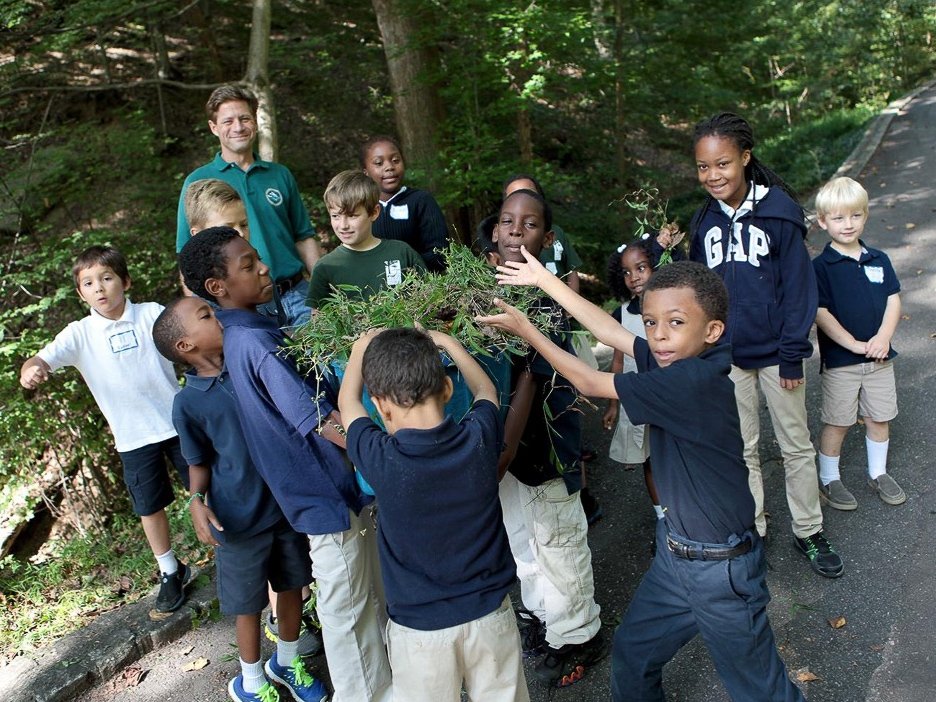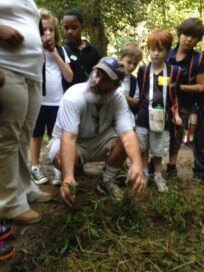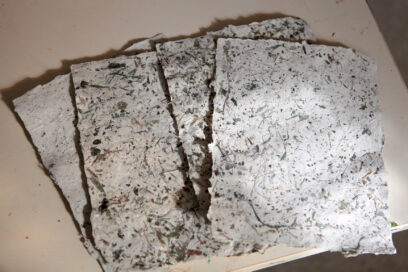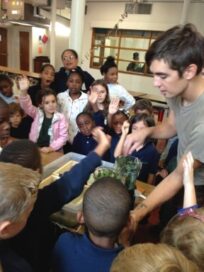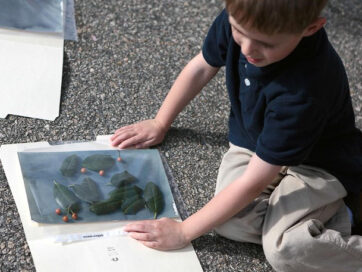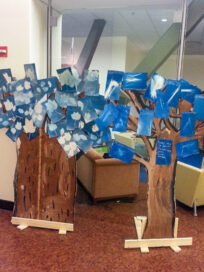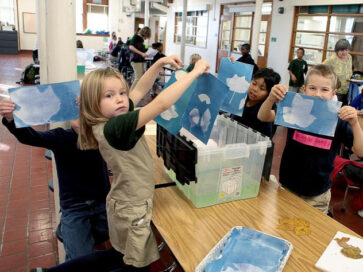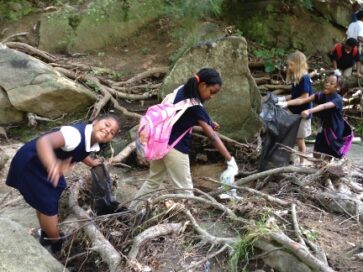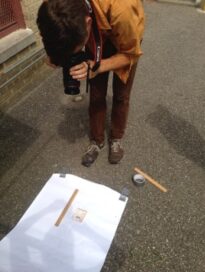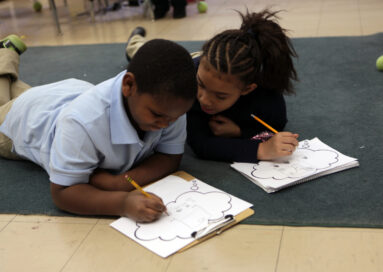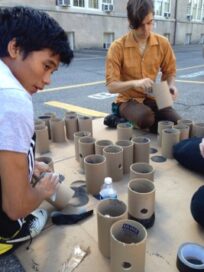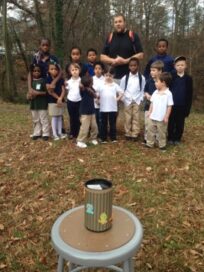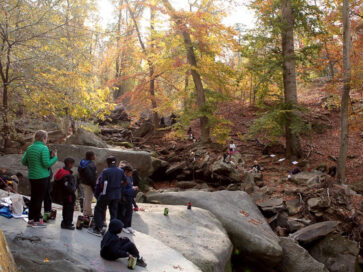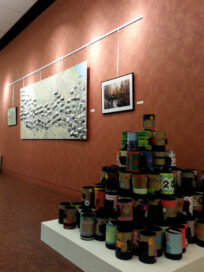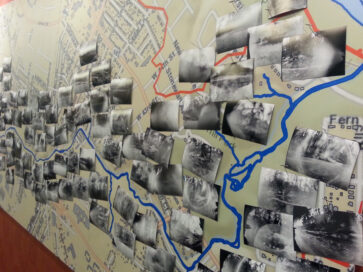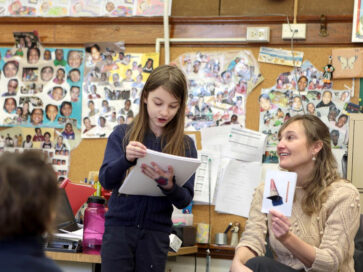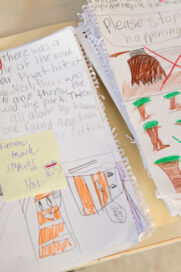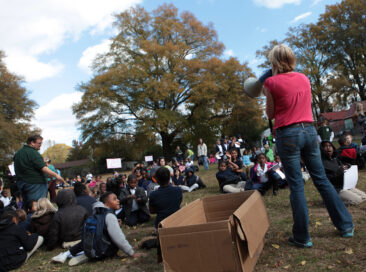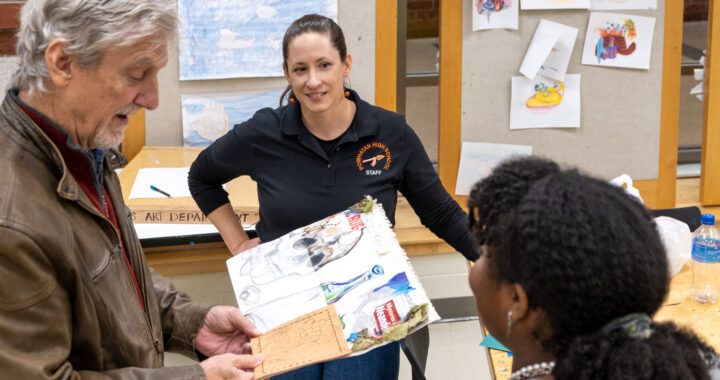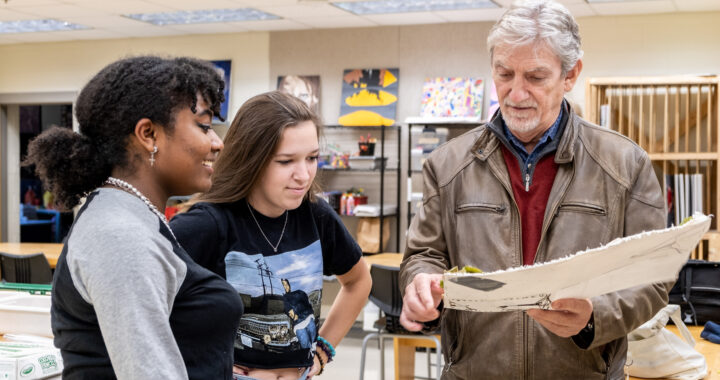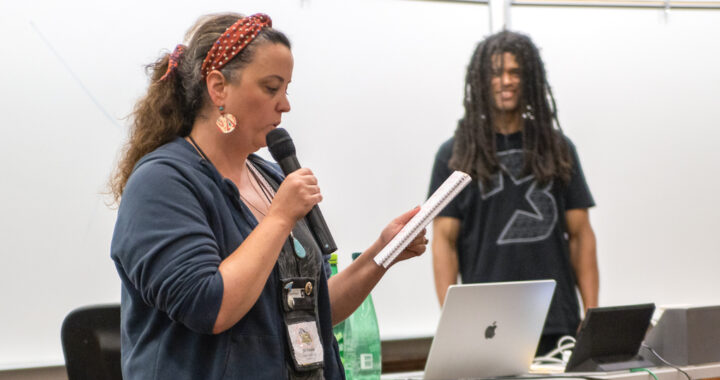Students and teachers at Patrick Henry School of Science and Arts spent a school year exploring the Reedy Creek Watershed while actively learning vital components of the curriculum and nurturing creative and communication skills through various art forms.
In 2013-2014, Partners in the Arts supported Patrick Henry School of Science and Arts (PHSSA)’s mission to offer a unique, integrated curriculum through creative instruction with a grant. Led by educators Autumn Nabors, Anne Chamblin, and Eileen Atkinson, the PIA grant resulted in a year-long, school-wide collaboration between 32 teachers, 250 students, 100 community volunteers, and several visiting artists and experts. In this project, students spent Fridays throughout the school year in mixed-age groups studying the river and park system surrounding the school. Local artist and activist Mark Strandquist worked with educators to guide students through this creative, arts-based exploration in three phases.
Native and Invasive Species Study
In one phase of the project, students researched and studied native plants. Then, they harvested and dried invasive plant species from Forest Hill Park. Strandquist (bottom right) guided students through the paper-making process by pulping the dried plants with shredded paper from discarded library books. The student-made paper and fact summaries were bound together to create an encyclopedia of native and invasive species in Virginia. The book is included in the Main Branch of the Richmond Public Library’s permanent collection.
Students also made cyanotype sun prints of native leaves. This project connected their environmental studies to chemistry and art. Then, they worked together to create large tree displays for their artwork.
Trash as Artifact, Fiction as Fact
In another phase of the project, students removed trash from Reedy Creek and Forest Hill Park. They learned the archeological principles of artifact documentation, and Strandquist helped photograph each specimen.
Then, students wrote and illustrated fictional stories about how the trash entered the ecosystem. Students also created public service announcements to encourage others to reduce future pollution. Students had the chance to work artist Charmaine Crowell-White on storytelling skills.
Pinhole Cameras and Mapping
Community volunteers from Capital One and HandsOn Greater Richmond donated supplies and time to assemble 250 pinhole cameras for PHSSA. Students learned about the math and science used to create images using pinhole cameras, and then gathered in various locations around the creek to simultaneously open their cameras and capture the creek for two minutes. The resulting photos offered unique perspectives of the creek and were mapped for display in an exhibit at Capital One. Giving students a public forum to demonstrate their learning increased the quality of products and improved the pride and community in the school.
Lasting Educational Outcomes
In addition to strengthening school community and relationships across grade levels, students were able to connect language arts, math, science, and social studies content through inquiry-based, experiential learning.
Aside from the visual, performance, and literary arts products they created, teachers reported that students developed many future-ready skills and competencies that benefit all disciplines:
- Research skills: Students practiced firsthand observation and recording using their ears, eyes, and hands in the field.
- Real-world community connections: Students interacted with guest artists, environmentalists, archeologists, family volunteers, and community volunteers throughout the project.
- Written communication skills: Students practiced narrative, descriptive, and opinion writing for authentic audiences, as well as personal reflections on the learning process.
- Verbal communication skills: Students practiced public speaking by presenting in front of their peers and used theater techniques to express their findings.
- Student achievement: Deep, meaningful learning was reflected by an increase in 3rd, 4th, and 5th grade math SOL scores and 2nd and 3rd grade PALS literacy assessment results.
- Teacher professional development: Building staff engaged in six sessions of arts integration training, collaborated with colleagues, worked closely with family volunteers, and built professional relationships with community volunteers and visiting experts.
Not only did student engagement and learning improve, but so did teacher engagement and learning. Patrick Henry School of Science and Arts grew a culture of risk-taking and innovative instruction that would benefit students for years to come.
Partners in the Arts (PIA) awarded Engaging Creative Thinkers (ECT) grants to teachers from 1994 to 2021. These grants made possible over 200 innovative, interdisciplinary projects in Richmond area schools. Since then, the PIA consortium has supported both educator professional development and in-school project implementation through the Joan Oates Institute for Integrated Learning.
The ECT Awards provided opportunities for teachers to reach all students across content areas, while developing critical thinking, creativity, collaboration, communication, and citizenship. ECT projects engaged a class, grade-level, or whole school, and connected teachers, students, families, and the community.
Alison Travis is the Program Coordinator for Partners in the Arts at the University of Richmond. She has spent ten years working in and with public schools to support integrated, innovative teaching and improve outcomes for all students.
